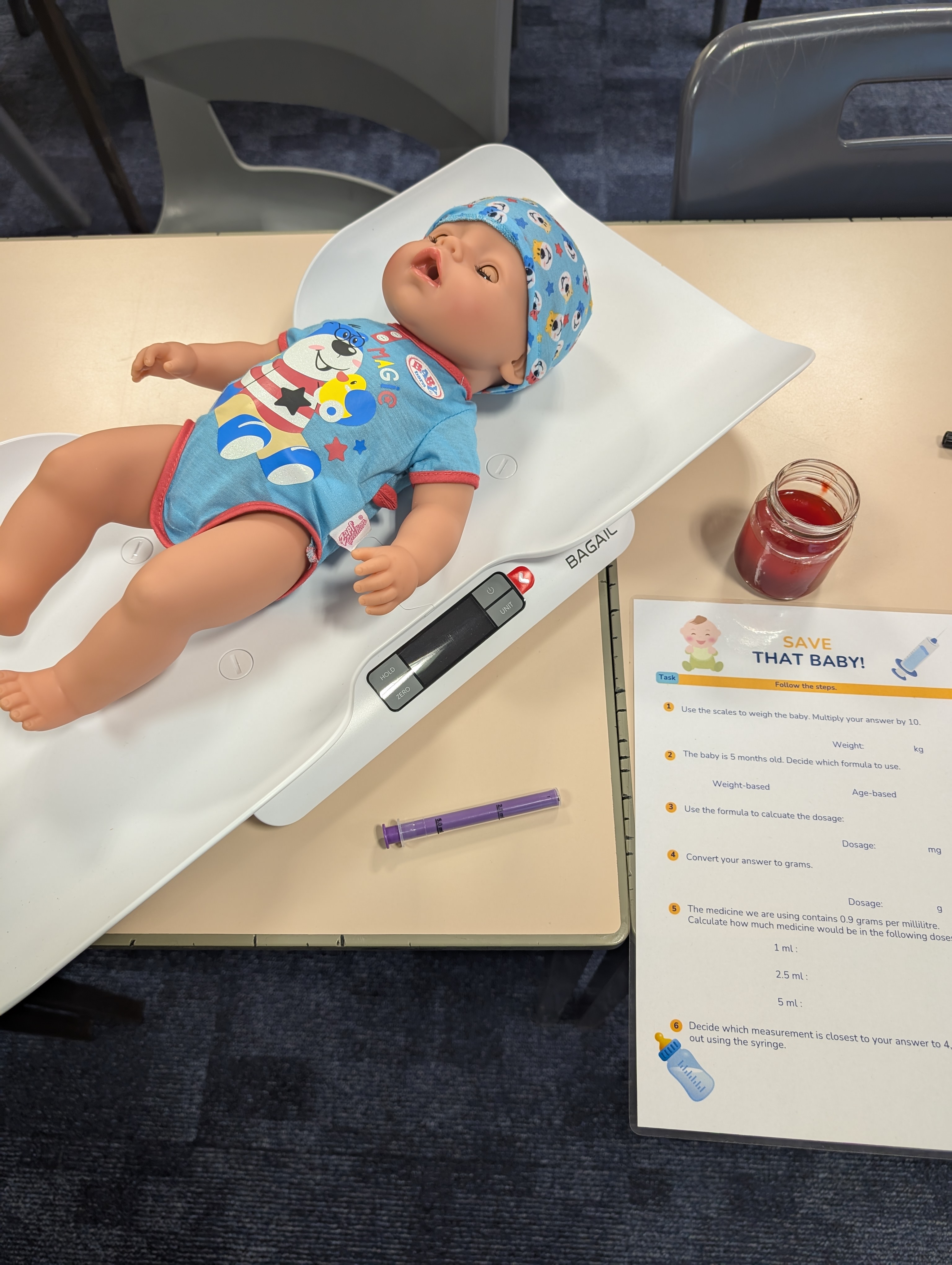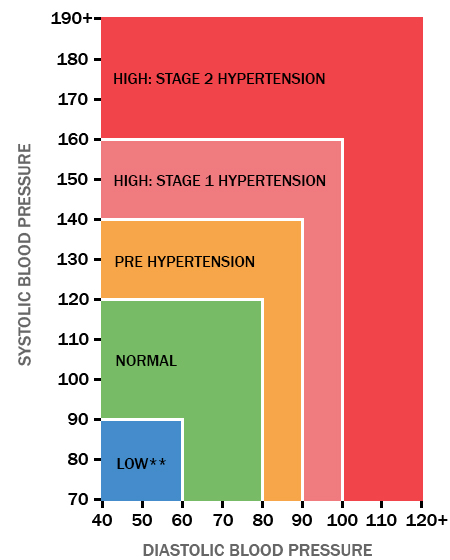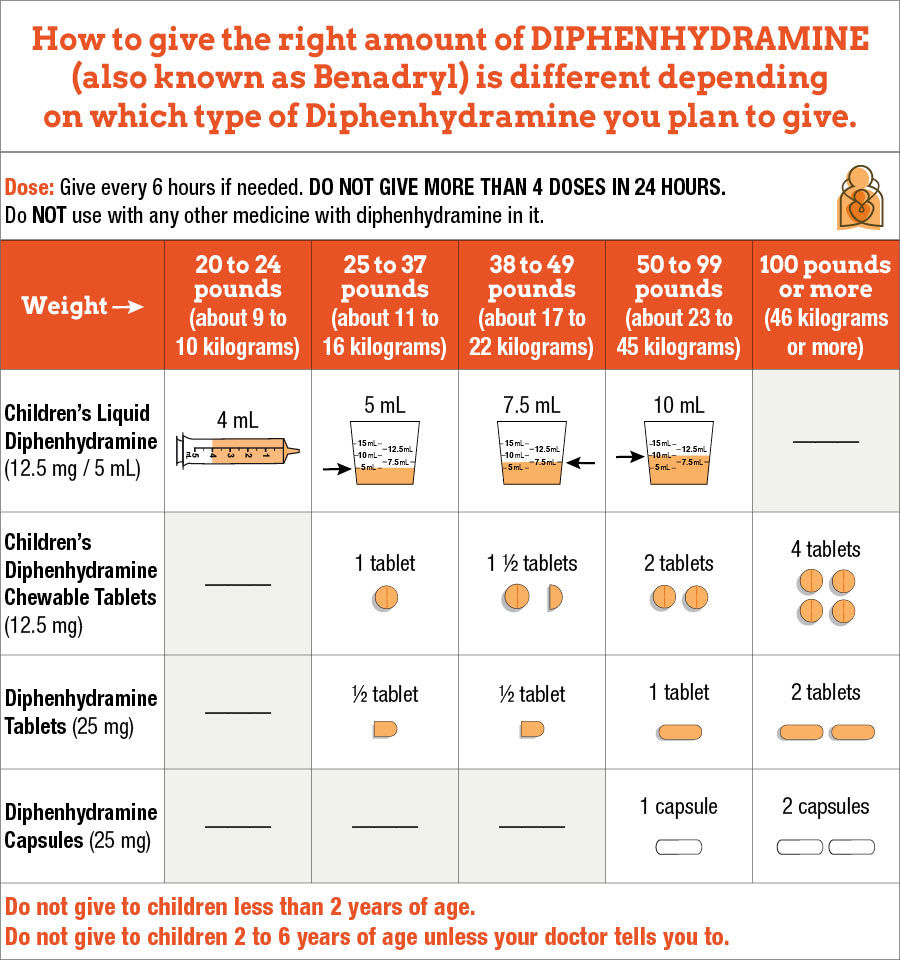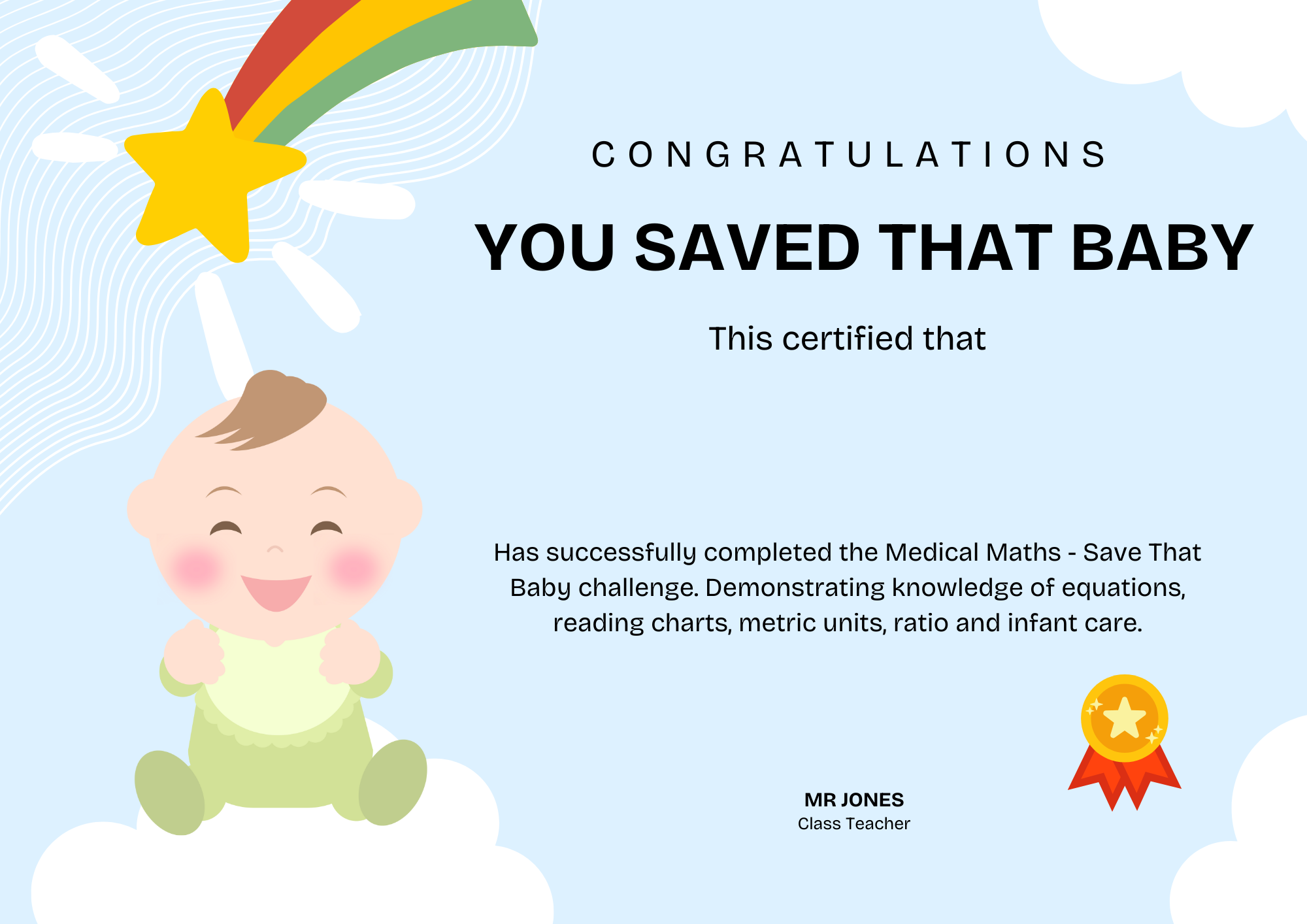Save That Baby
Save That Baby is a four lesson programme that covers:
- Interpreting Charts
- Substituting into Formulae
- Converting Metric Units
- Simple Ratio
The programme sets these topics in the context of paediatric care.
You will require:
- A baby doll
- A weighing scale
- A medicine dosage measurer- the type found in packs of Calpol

The programme is for students in their first year of high school. The purposes are as follows:
- To allow students to see mathematics being used in a simple to understand applied context.
- To build student confidence.
- To give students a fun and memorable experience with mathematics in their first year of high school.
This document will share the lesson outlines, as well as links to templates that can be used in delivering the class. In the final section you can read about the context in which this programme was used at Kirkcaldy High School in Fife.
Lesson 1
The focus is on interpreting tables and graphs. Students are presented with the following blood pressure chart:

The teacher can model looking up a few examples, plotting the location of the points.
The students now answer the questions on the first page of “Lesson 1 Worksheet”. These questions could be asked via mini-whiteboards.
Next up students are shown this busy looking chart:

Again the teacher can model using the table, and pose the questions on the second half of the “Lesson 1 Worksheet”.
Lesson 2
The focus of this lesson is substituting into a formula.
To work out a dosage, measured in milligrams, students are given two formulae:
Weight-based formula
\[Dosage = 100 + Mass \times 250\]Where mass is measured in kilograms.
Age-based formula
\[Dosage = 50 + Age \times 300\]Where age is measured in months.
Students are to use these formulae to work out the dosage of medicine required for infants, so all examples will use a mass between 3 kg and 12 kg, and ages between 2 months and 24 months.
Mini-whiteboards are useful for this task, or projecting questions on the board. Example questions:
- 6 months old
- 9 months old
- 1 year old
-
- 5 kg
- 3.7 kg
- 4500 g
The final question above can lead to a discussion about converting metric units. “Kilo” means “thousand”, and “milli” means “thousandth”.
Students are give the following task:
Convert the following to grams (g):
- 3 kg
- 3.2 kg
- 25 kg
- 4000 mg
- 5500 mg
- 3 mg
- 0.04 kg
Finally, students are asked to put everything together. They are given the following table to use:
| Age Group | Weight Range | Formula |
|---|---|---|
| 1-3 months | ≤ 5 kg | Age-Based |
| 1-3 months | > 5 kg | Weight-Based |
| 4-6 months | ≤ 7 kg | Age-Based |
| 4-6 months | > 7 kg | Weight-Based |
| 7-12 months | ≤ 9 kg | Age-Based |
| 7-12 months | > 9 kg | Weight-Based |
Question: “Calculate the dosage, in grams, needed for a 5 month old who weighs 7.3 kg.”
Here students must correctly identify the correct formula to use, substitute into that formula, and then convert their answer to grams.
Lesson 3
The focus of lesson 3 is using ratio, with a focus on using the notation correctly.
Begin Lesson 3 with a recap, showing the table from lesson 2 and have the students work out a few more dosages based on different masses and ages.
Model the following example:
“Medicine X is a liquid.
It contains 1g per ml.
How many ml do I need to give my baby if it needs 5g of Medicine X?”
\[1\thinspace g : 1 \thinspace ml\] \[5 \thinspace g : 5 \thinspace ml\]Add arrows showing both sides are multiplied by 5, because $5 \div 1 = 5$.
Similarly model:
“Medicine Y is a liquid.
It contains 0.2g per ml.
How many ml do I need to give my baby if it needs 10g of Medicine X?”
\[0.2\thinspace g : 1 \thinspace ml\] \[10 \thinspace g : 50 \thinspace ml\]Add arrows showing both sides are multiplied by 50, because \(10 \div 0.2 = 50\).
The “Lesson 3 Worksheet” can then be used.
Care should be taken to ensure that students are confident completing question 4.
Lesson 4 - Save That Baby
The final lesson is when students get to show off their skills.
Print a colour copy of “Save That Baby” and laminate it. If you prefer to edit the document you can on Canva via this link: Canva
Give the students access to the baby, the weighing scale, some liquid (water and food colouring), and the Save That Baby sheet.
On the board, or printed, have the two Dosage formulae and the table from lesson 2.
Students must weigh the baby. Because a doll will be light, I instruct the students to multiply their mass by 10. Adjust this as necessary.
Using the table, have the student describe which formula they will use.
The student then uses the formula, and converts their answer into grams.
Using the worksheet, the student finds the amount of medicine (in grams) for 1 ml, 2.5 ml and 5 ml of liquid medicine, and decides which of the 3 is most suitable.
Finally they use the dosage measurer to get the correct amount.
If successful, they have “Saved That Baby” and get a certificate. Certificates are easy to generate online.
The one I used can be found here.

Students can complete individually, or in pairs. Have several sheets printed and people can complete the task concurrently.
When it’s not their turn, have students working on another task. When I run this, I have the other students complete a task where they plot bar charts and dot plots.
Context
At Kirkcaldy High School, we gave S1 pupils the chance to decide between different elective “Numeracy Periods.” The overall aim was to give students some choice and increase the enjoyment of mathematics. Students do one numeracy period a week for a term, and then move on to a different numeracy class.
“Save That Baby” was a four lesson run under “Medical Maths”, which explored medicine as a context for practicing different numeracy topics.
By the elective nature of the class, students had a range of prior knowledge before taking joining the class. Some had no experience of algebra or ratio notation for example, whilst others did.
The sole purpose was to give students a taste of success and enjoyment in mathematics.
I’d recommend using the programme as part of a run of lessons early into the first year of high school.
Adjust the material to suit the needs of the students and your own teaching style. As you can see from the certificate design, kitsch was the order of the day. I found pretending the baby was real “remember to support the neck” and having it visible during the earlier lessons was important.
Feedback from students has been positive. We surveyed whether the programme helped them “see how maths is used in real life” (100% agreed), whether they enjoyed the programme (83%), whether they felt more confident in their maths abilities (83%) and whether the programme was memorable (92%).
Perhaps the most important feedback came from two students who didn’t want to put their certificates in their bags. “Can we get it laminated?”
